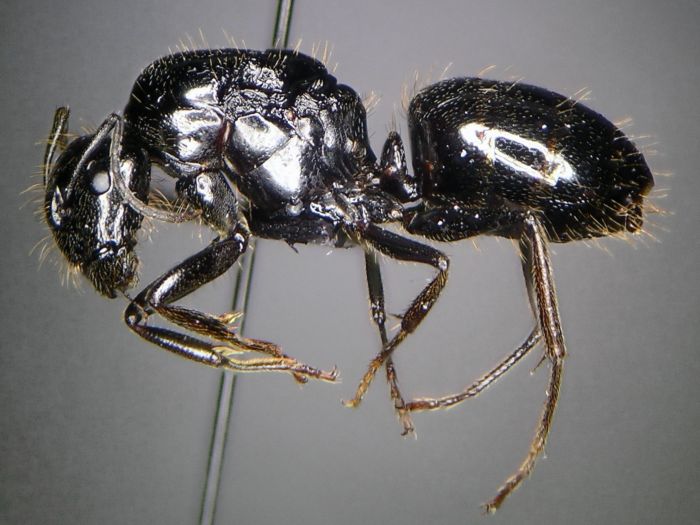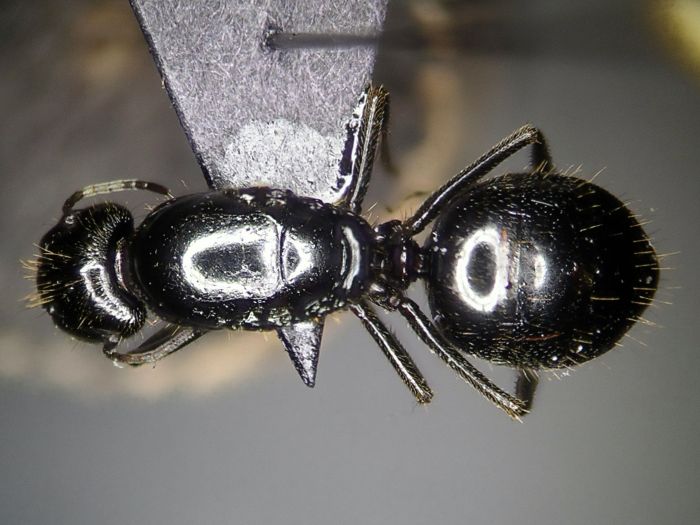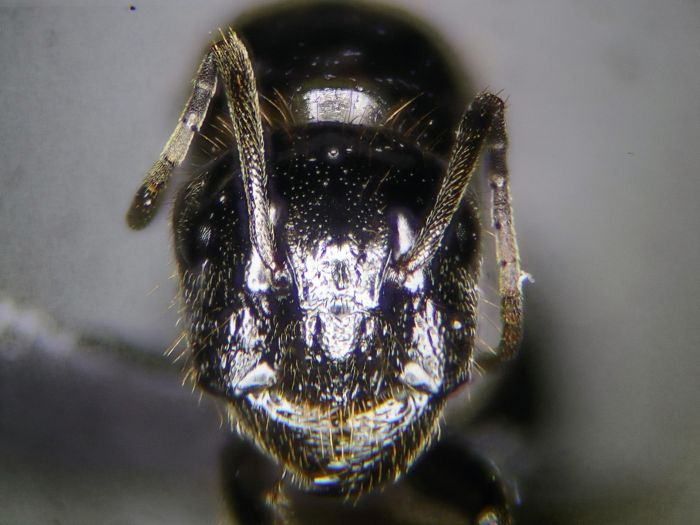1. Location of collection: Little Thomas Mountain, San Jacinto Mountains, California.
2. Date of collection: 5-3-2014.
3. Habitat of collection: Pine/Oak Forest.
4. Length (from head to gaster): 11mm.
5. Color, hue, pattern and texture: All black with dark brown legs; yellow hairs, numerous on cheeks.
6. Distinguishing characteristics: No clypeal carina or notch.
7. Anything else distinctive:
8. Nest description:
These are the best pictures I could get of this queen so far; she refuses to stop moving.






Founding chamber






























